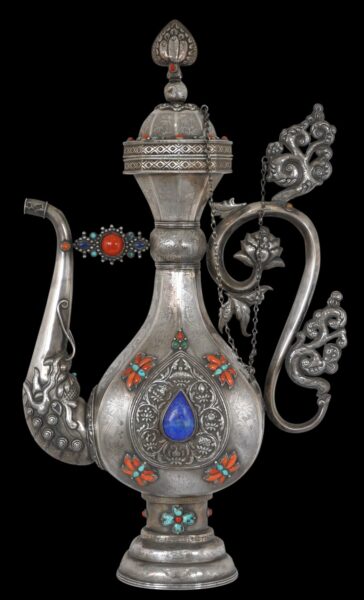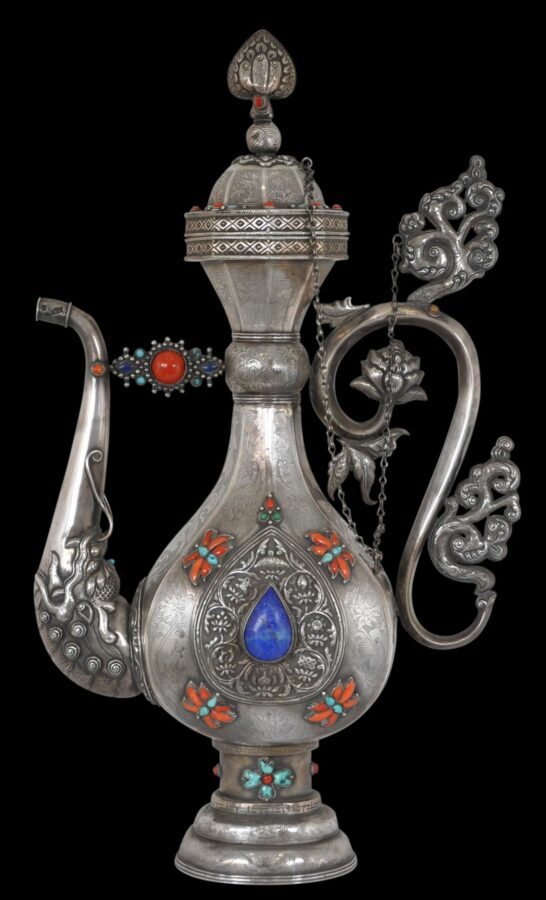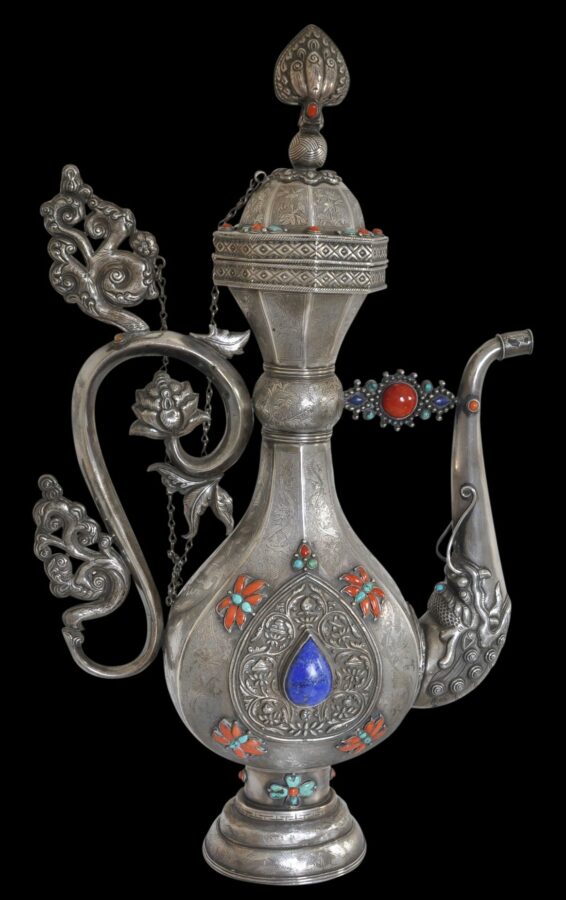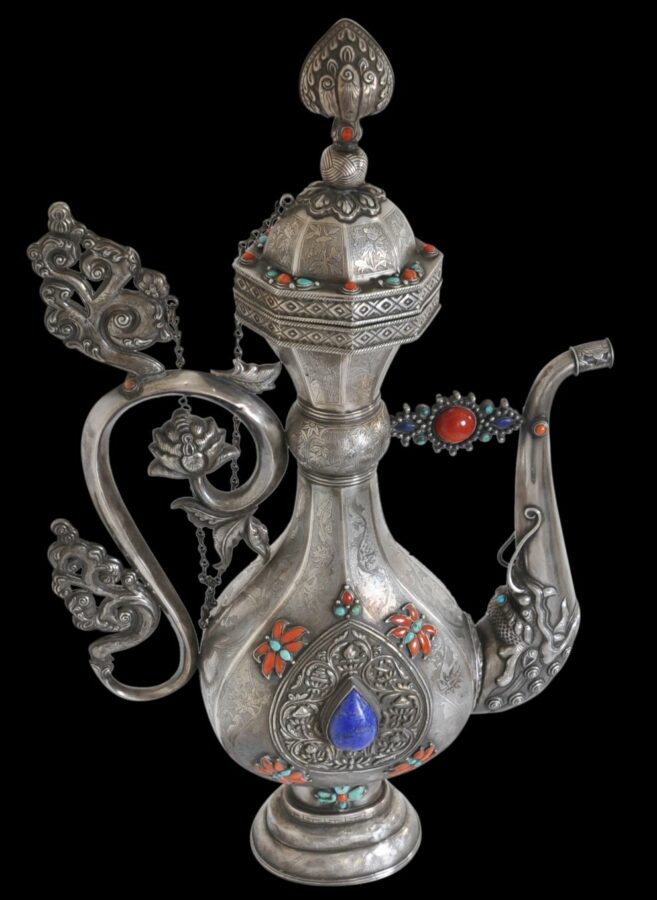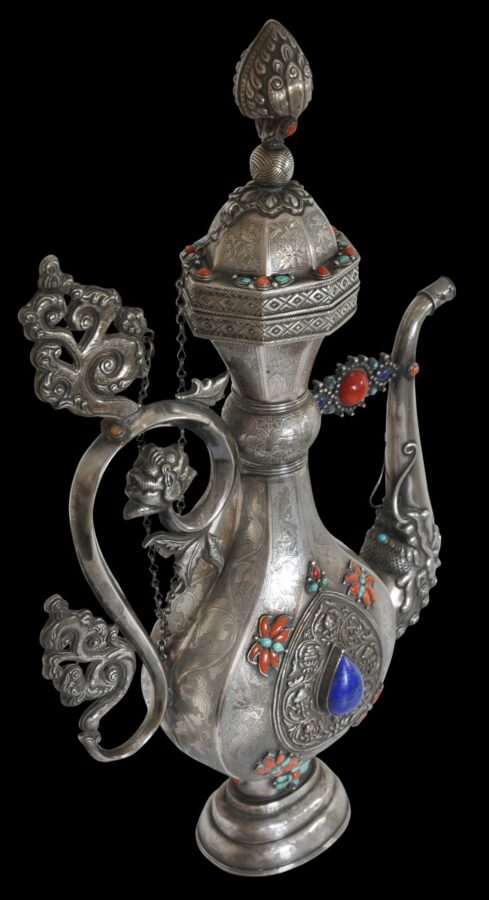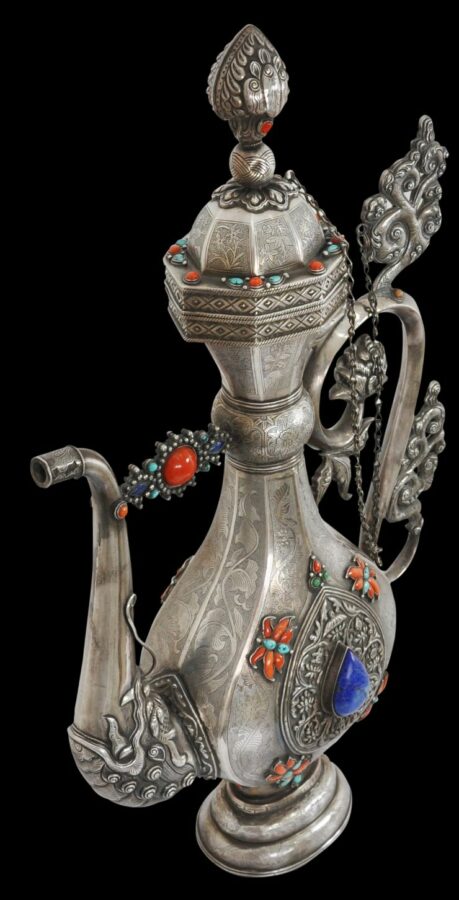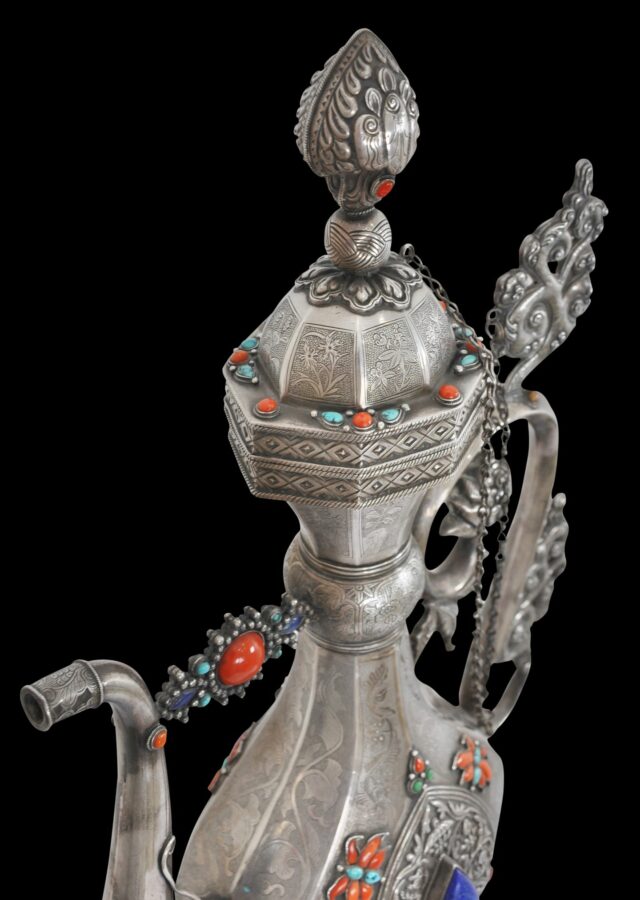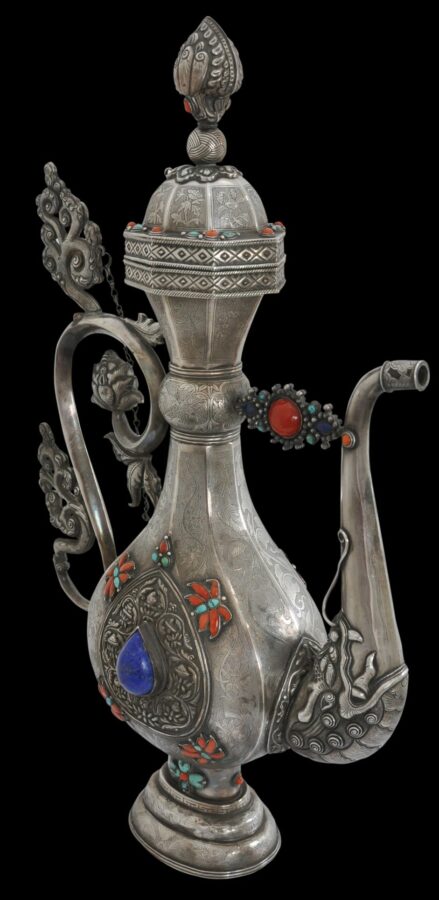This tall ewer, based on smaller examples intended for either tea or wine, most probably was made in Mongolia as a presentation piece, or possibly was made in China in a Mongolian style.
It sits on a small, oval, tiered foot; a flattened, elongated, tear-shaped body; an octagonal neck with a matching octagonal, hinged cover that is domed and surmounted by a multi-staged finial; a spout that emerges from a makara’s mouth, the makara having applied silver wire feelers; and the most extravagant ‘S’-form handle decorated with elaborate leafy and floral flourishes.
The body, foot and cover are all finely engraved with flower motifs against a finely tooled background.
Both sides of the ewer are inset with identical arrays of inset stones set in raised boxed settings. This includes massive tear-shaped lapis lazuli cabochons set into the centre of each side of the ewer’s body. Elsewhere, there are floral motifs in turquoise and coral, including an elaborate bridge between the spout and the body which is decorated with stones and fine silver granulation work.
The cover is linked to the handle by means of the original silver chain.
Pal (1969, p. 306) illustrates what is described as a ceremonial ewer which features similar silver-smithing and motifs to that seen on the vessel here and which is attributed to circa 1800 Eastern Tibet or Mongolia. It is likely that the Pal vessel is later and from Mongolia. Pal summarises also that they might have been made in China perhaps for the Himalayan market or inspired by Himalayan motifs. Another possibility is that there were workshops in Mongolia with local Chinese craftsmen producing such luxury items for the local aristocracy and nobles who used them and also presented them as diplomatic gifts.
The ewer here is in excellent condition. Some of the stones are likely to be replacements but which is not possible to tell. Overall, it is a splendid item with great presence afforded by its size and quality.
References
Pal. P., The Art of Tibet, The Asia Society, 1969.
Tsultem, N., Mongolian Arts and Crafts, State Publishing House, Ulan-Bator, 1987.


